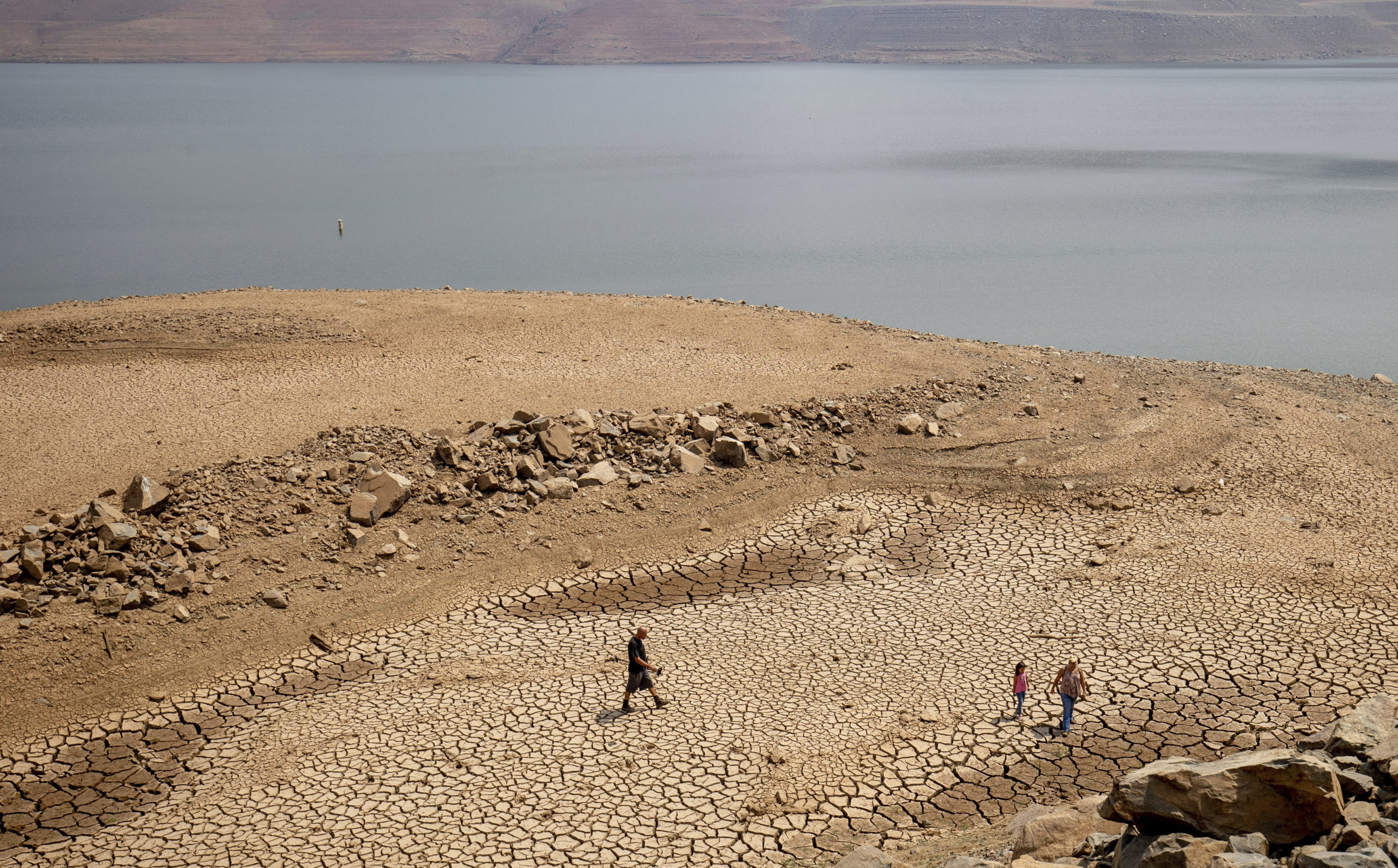SACRAMENTO, Calif. (AP) — California’s urban water users and farmers who rely on supplies from state reservoirs will get less than planned this year as fears of a third consecutive dry year become reality, state officials announced Friday.
Water agencies that serve 27 million people and 750,000 acres (303,514 hectares) of farmland, will get just 5% of what they’ve requested this year from state supplies beyond what’s needed for critical activities such as drinking and bathing.
That’s down from the 15% allocation state officials had announced in January, after a wet December fueled hopes of a lessening drought.
But a wet winter didn’t materialize and unless several more inches of rain falls this month, the January-March period will be the driest start to a California year at least a century. That’s when most of the state’s rain and snow typically falls.
Mandatory restrictions on using water for outdoor activities like landscaping and other purposes may come from local water agencies as they continue to grapple with limited supplies, said Karla Nemeth, director of the California Department of Water Resources.
Local water agencies that know their communities’ unique needs are better poised than state officials to set water use restrictions, Nemeth said.
“I think with this reduced allocation we are going to see more urban areas in California move into some kind of mandatory water conservation,” she said in an interview.
State officials will continue urging people to voluntarily cut water use by 15%, an amount designed to get Californians’ collective water use back to what it was during the last drought, which lasted from 2012 to 2016, Nemeth said.
Statewide water use in January actually went up 2.6% compared to the same month in 2020, due to dry conditions and warm temperatures.
About a third of Southern California’s water comes from state supplies, mostly routed through the Metropolitan Water District of Southern California, which serves 19 million people. Abel Hagekhalil, the district’s general manager, said in a statement Friday that the public needs to do more to save water.
“We all need to take this drought more seriously and significantly step up our water-saving efforts to help preserve our dropping storage levels and ensure we have the water we need into the summer and fall,” he said.
California is in its second acute drought in less than a decade, and scientists say the U.S. West is broadly experiencing the worst megadrought in 1,200 years, made more intense by climate change.
People adapted their water use during the state’s last drought, in part by ripping up sprinkler-hungry lawns and replacing them with drought-resistant landscaping. Many of those water-saving habits stuck.
But the dry conditions that began anew in 2020 are demanding more conservation, as reservoirs such as Lake Oroville and Shasta Lake remain below historical levels and less water from melting snow is expected to trickle down the mountains this spring.
Current predictions estimate the state will have about 57% of its historical median runoff this April through July, said Alan Haynes, hydrologist in charge for the California Nevada River Forecast Center of the National Oceanic and Atmospheric Administration. Melted snow traditionally provides about a third of the state’s water supply.
A very wet December put water content in the snow at 160% of normal levels, but isn’t resulting in as much water runoff as expected because warmer temperatures are causing some of that water to evaporate rather than flow into rivers and streams as it melts, said Nemeth, the Department of Water Resources director.
A persistent lack of water could produce a range of negative consequences for California, including farmers fallowing fields and endangered salmon and other fish dying.
The water providers that rely on state supplies have a certain amount they of water they can request from the state, and state officials make determinations through the winter on how much the providers will get based on supply.
In December, before the major snowfall, state officials told water providers that they wouldn’t get anything beyond what was needed for immediate health and safety, such as drinking and bathing. The state upped that to 15% of requested supplies in January.
Critics of California’s water policy say the state promises more water each year than it has to give. That’s led to a continued diminishment of supply in federally and state run reservoirs, said Doug Obegi, an attorney focused on water for the Natural Resources Defense Council.
“We basically have a system that is all but bankrupt because we promised so much more water than can actually be delivered,” he said.
Officials on Friday also announced a plan to seek a temporary exemption from water quality requirements in Northern California’s Delta, the part of the state’s watershed where the freshwater rivers and salty ocean water mingle.
That would allow the state and federal water projects to release less water into the Delta from the Shasta, Folsom and Oroville reservoirs — which are the state’s major water supply sources.
The water quality standards are designed, in part, to ensure the water doesn’t get so salty it can’t be used for farming, drinking and protecting the environment.

